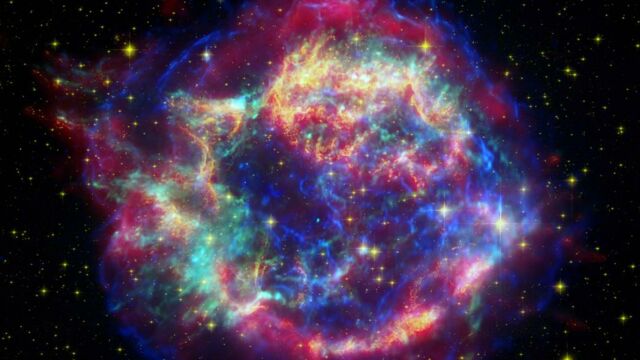Space is an incredible - and slightly terrifying - part of our universe. Scientists still have so much to explore and understand. As a result, there are so many supercomputers and telescopes taking pictures of the beyond. Australia has a brand new supercomputing system and it has revealed some incredible images of a dying star.
Discover our latest podcast
The CSIRO’s Askap radio telescope
Australia’s newest supercomputing system is connected to the CSIRO’s Askap (Australian Square Kilometre Array Pathfinder) radio telescope. This telescope ‘provides a big picture view of the Universe’, according to CSIRO’s website.
The Askap radio telescope is at the Murchison Radio-astronomy Observatory in Western Australia. The thing that makes this telescope different from others, according to CSIRO, is that Askap has a radio ‘camera’ which is called a phased array feed receiver.
A telescope of this size needs impressive computing software to function. CSIRO used the Pawsey Supercomputing Research Centre and its supercomputer Setonix, as reported by The Guardian.
Supernova remnant as resolved by CSIRO's ASKAP Radio Telescope and the Pawsey Centre pic.twitter.com/6eWRWaq72M
— Ann_the_Tech 💉💉💉 (@Ann_alytikal) August 11, 2022
A dying star
Australia’s telescope captured images of a dying star. When a star dies, it turns into a supernova and explodes. According to The Guardian, Askap captured a supernova remnant G261.9+5.5.
This supernova is estimated to be over a million years old and is located 10,000 to 15,000 lightyears away from us.
The Guardian explains that supernova remnants (SNRs) are:
The remains of powerful explosions from dying stars. The ejected material from the explosion ploughs outwards into the surrounding interstellar medium at supersonic speeds, sweeping up gas and any material it encounters along the way, compressing and heating them up in the process.
Read more:
⋙ NASA reveals deepest image of the universe from new space telescope
⋙ From meteor showers to super moons: Here’s all you need to know about the night sky events in August















